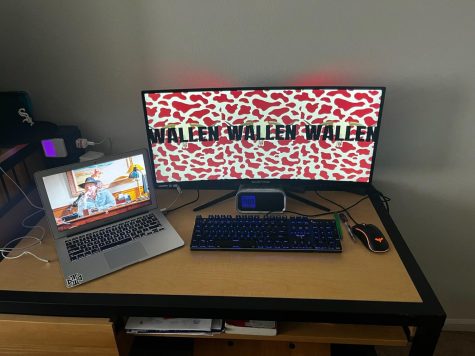Making the Switch to Canvas: Two Perspectives

This semester, Siena Heights University has introduced a new online learning platform called Canvas. It has begun replacing the current platform, eCollege. Teachers and students have been transitioning to the new software, but some people said they are having different experiences than others.
Professor Karin Barbee hasn’t made the switch yet.
“I planned on doing the self-paced training module over the summer, but it was around 10 hours of training, and I just didn’t get around to it,” Barbee said. “I knew I didn’t want to switch over mid-year, so I decided to wait until next summer.”
Barbee said that adapting to the new system would take a while, which is why she decided to wait until next year.
“The first time I use Canvas, I want to explore all of the bells and whistles. That’s not something I have time to do during the academic year,” she said.
However, that doesn’t mean that she hasn’t taken a look at it or heard other reviews from her colleagues. She believes it’ll be “much easier for students and faculty.” Everyone she has talked to about has said great things so far.
Despite Barbee’s delay of switching over, it seems as if the switch has been well-received by the other professors already. The only con to switching to this new platform, she can see, is the learning curve. But she is confident in her ability to adapt.
Dr. Dana Schumacher-Schmidt has already made the switch.
She describes the process of switching over as “pretty easy.” She was able to attend one of the Canvas training sessions over the summer and she found it “easy enough to pick up,”so much so that she was able to start designing her course websites during the session. She has used other systems like Moodle and Blackboard before, and Canvas didn’t seem too different, according to Schumacher-Schmidt.
She admits that she was “never a huge fan of eCollege.” She felt it was an appropriate time for teachers to make the switch.
However, she thinks it has been “confusing or inconvenient for students this year taking some courses with Canvas and some with eCollege, but I understand why the university wanted to give people time to make the transition to the new system.”
Schumacher-Schmidt has found the transition easy for her, and has come to like some of the features available on the new platform, Canvas.
“One of my favorite features of Canvas is called ‘SpeedGrader,’ which allows me to read and comment on students’ work in Canvas,” she said. “I can comment directly on the document a student submits or create my own rubric to give feedback and evaluate the essay. When I’m done, the grade is automatically entered into the grade book and students can see my comments on their work. I’ve come to prefer reading final versions of essays online, and this feature makes the process very efficient. It has its quirks, like any learning management system, but I’ve found figuring out Canvas to be pretty intuitive overall.”
Canvas has many features that are making the switch easier for students and professors alike. It allows students to easily see assignment due dates and how many points the assignment is worth. Canvas also has a feature that allows students to see possible grade outcomes. By entering hypothetical assignment grades, students can see what their final grade would be. It is mobile-friendly, and lets students decide where their course information is sent to. Information such as grades, assignments and announcements can be sent to students via text message, email, Facebook or Twitter.
Only 12 courses are currently using Canvas; however, it will permanently replace eCollege by July 2017.









